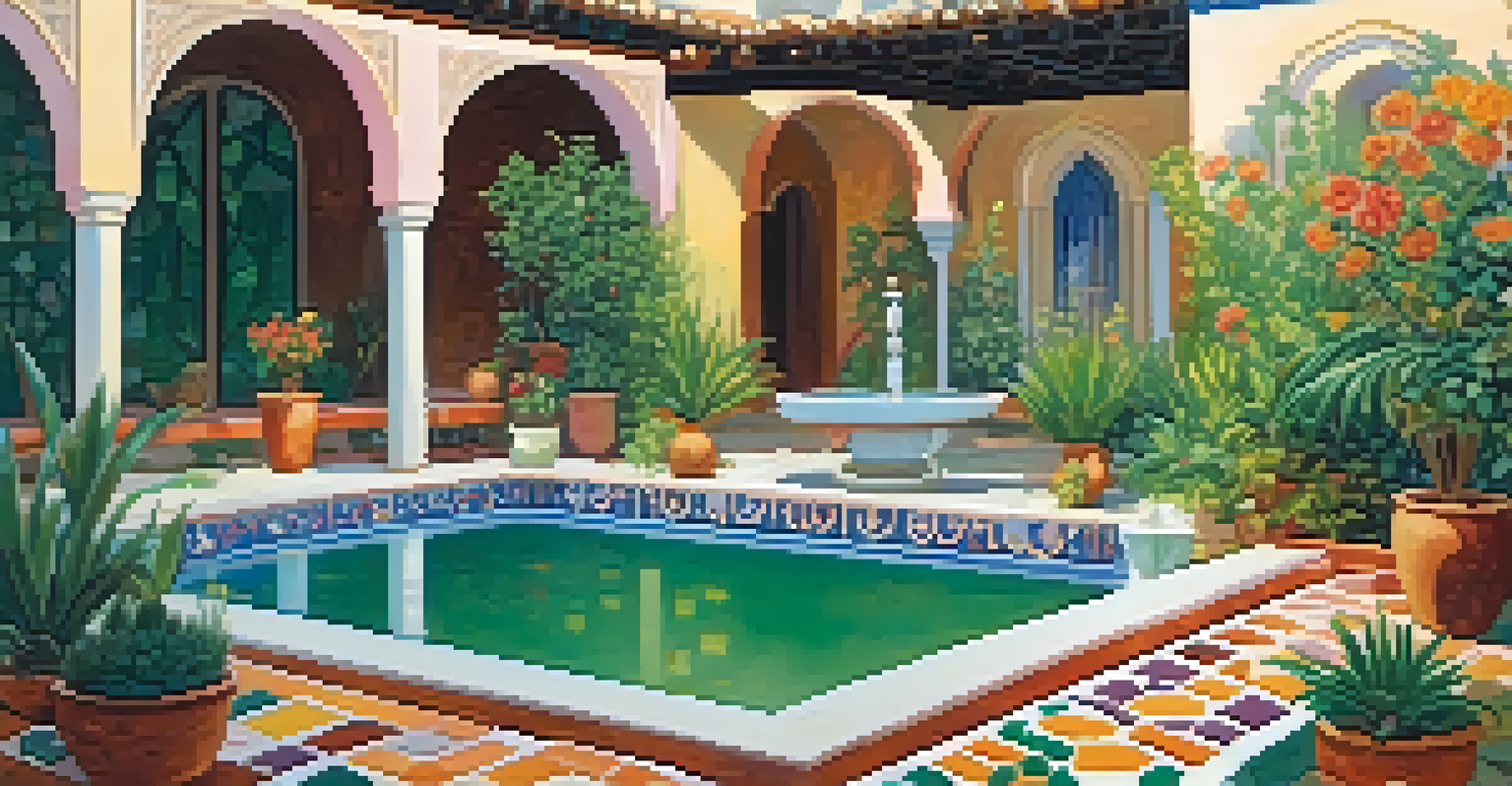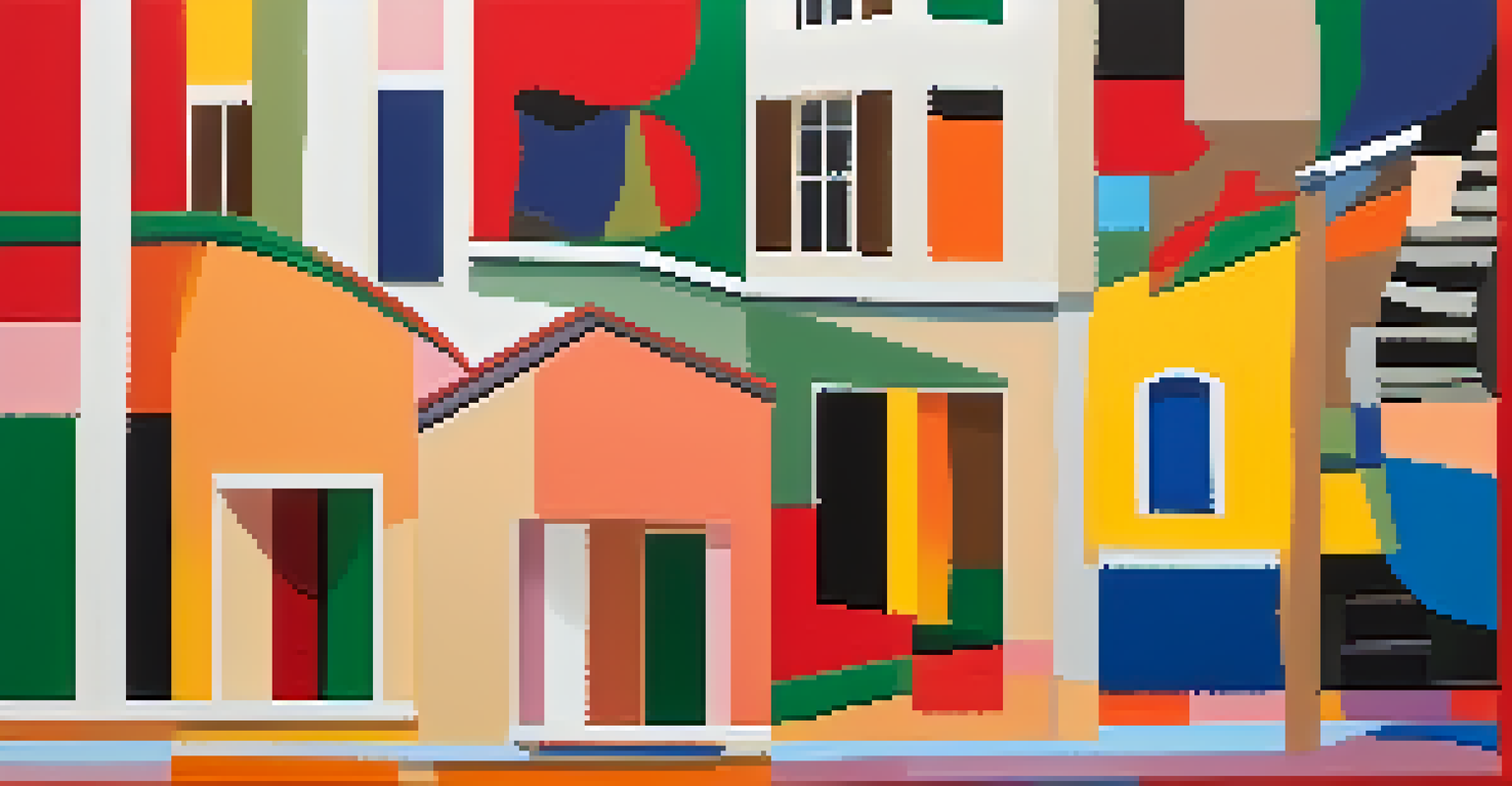Henri Matisse: The Colorful Innovator of Fauvism and Beyond

The Early Life of Henri Matisse: Roots of a Master
Henri Matisse was born on December 31, 1869, in Le Cateau-Cambrésis, France. Growing up in a family of grain merchants, he was initially steered towards a career in law. However, a bout of appendicitis changed everything; during his recovery, he began to explore painting as a form of self-expression. This pivotal moment ignited a passion for art that would lead him to become one of the most influential artists of the 20th century.
Color is the keyboard, the eyes are the harmonies, the soul is the piano with many strings.
Matisse's early artistic journey took him to Paris, where he was immersed in the vibrant art scene of the time. He studied at the Académie Julian and later at the École des Beaux-Arts, where he honed his skills. His exposure to various art movements, including Impressionism, played a significant role in shaping his unique style. It was during this period that he began experimenting with color and form, setting the stage for his future innovations.
By the early 1900s, Matisse had developed a distinctive approach that would come to define his work. His use of bold, saturated colors and loose brushwork set him apart from his contemporaries. This experimentation eventually led to the formation of the Fauvist movement, where Matisse would cement his reputation as a revolutionary artist.
Fauvism: The Birth of a Colorful Movement
Fauvism emerged in the early 20th century, characterized by its vibrant use of color and simplified forms. The term 'Fauvism' comes from the French word 'fauves,' meaning 'wild beasts,' a nod to the bold colors that shocked traditional art lovers. Matisse, alongside fellow artists like André Derain, became a leading figure in this radical movement. Their work emphasized emotional expression over realistic representation, using color as a means to convey feelings rather than merely depict reality.

One of Matisse's most famous works, 'Woman with a Hat,' exemplifies the Fauvist style. The painting features his wife, Amélie, adorned in vibrant colors that defy conventional portraiture. Rather than focusing on lifelike accuracy, Matisse prioritized emotional resonance, using color to express his subject's personality and mood. This approach challenged viewers to see art not just as a visual representation but as an emotional experience.
Matisse's Artistic Transformation
Henri Matisse's shift from law to art began during his recovery from appendicitis, leading him to explore painting and ultimately become a revolutionary figure in modern art.
Fauvism may have been short-lived, lasting only a few years, but its impact on modern art was profound. Matisse's innovative use of color and form influenced future movements, including Expressionism and Abstract art. Through Fauvism, Matisse established himself as a pioneer, encouraging artists to explore the emotional power of color in their work.
The Use of Color: Matisse's Signature Technique
Matisse's approach to color was revolutionary in its simplicity and emotional depth. He believed that color could be a powerful tool for expression, often using non-naturalistic hues to evoke feelings. For instance, in his famous work 'The Joy of Life,' Matisse employs a vivid palette that transports viewers into a dreamlike world, where colors blend and dance harmoniously. This emphasis on color as a primary means of communication would become a hallmark of his style.
What characterized Fauvism was that we were not afraid of color. We simply used it, as if it were an object, for the sake of its own beauty.
In addition to his bold color choices, Matisse was known for his innovative use of pattern and texture. He frequently incorporated decorative elements into his compositions, creating a sense of rhythm and movement. This technique can be seen in works like 'The Dance,' where the swirling figures are enveloped in a vibrant, patterned background. Such elements added layers of complexity to his paintings, inviting viewers to explore beyond the surface.
Matisse's devotion to color extended beyond traditional painting methods; he embraced new media and techniques. Later in his career, he experimented with cut paper collages, creating works like 'The Snail,' where he arranged colorful shapes to form dynamic compositions. This innovative approach underscored his belief that color could transcend the boundaries of traditional art forms, paving the way for new artistic expressions.
Matisse's Relationship with Other Artists
Throughout his career, Matisse maintained relationships with various artists, enriching his creative journey. His friendship with Pablo Picasso, another giant of modern art, is particularly noteworthy. Although they had different artistic philosophies, their interactions stimulated mutual growth and experimentation. They influenced each other's work, pushing the boundaries of artistic expression during a time of great innovation and change.
Matisse was also a mentor to many young artists, encouraging them to explore their individual styles. He believed in the importance of personal expression and often invited emerging talents to his studio. This collaborative spirit contributed to the vibrant art community in Paris, where artists exchanged ideas and techniques freely. Matisse's generosity in sharing his knowledge helped shape the next generation of modern artists.
Fauvism's Bold Expression
Matisse played a pivotal role in the Fauvist movement, prioritizing emotional expression through vibrant colors and simplified forms, as seen in works like 'Woman with a Hat.'
Despite occasional rivalries, Matisse's relationships with other artists reflected a shared commitment to innovation. His willingness to embrace new ideas and collaborate with others fostered a spirit of experimentation that defined the early 20th-century art scene. This interconnectedness among artists allowed for the flourishing of diverse movements, with Matisse at the forefront of this creative revolution.
The Influence of Culture and Travel on Matisse's Work
Henri Matisse's artistic journey was significantly influenced by his travels and exposure to different cultures. His trips to North Africa, particularly to Morocco, left a lasting impression on his color palette and themes. The vibrant landscapes and rich cultural heritage inspired works like 'The Moroccan Garden,' where Matisse captured the essence of the region's beauty through bold colors and patterns. This exploration of different cultures enriched his art, adding layers of meaning and complexity.
Matisse's fascination with Islamic art and design is evident in many of his works, where intricate patterns and ornamental motifs play a prominent role. He often incorporated these elements into his compositions, blending Western and Eastern influences to create a unique visual language. This fusion of styles not only showcased his versatility but also reflected his appreciation for diversity in artistic expression.
Travel continued to shape Matisse's artistic vision throughout his life. From the bustling streets of Paris to the serene landscapes of Nice, each location brought new inspiration. His later works, characterized by a sense of lightness and simplicity, reveal how these experiences informed his creative process. Matisse's ability to absorb and reinterpret cultural influences contributed to his status as a true innovator in the art world.
Legacy: Matisse's Enduring Impact on Art
Henri Matisse's legacy is felt far beyond his lifetime, influencing countless artists across generations. His pioneering spirit and bold use of color opened doors for future movements, including Abstract and Color Field painting. Artists like Mark Rothko and Jackson Pollock drew inspiration from Matisse's emphasis on emotional expression through color, redefining the boundaries of modern art. His innovative techniques continue to resonate, encouraging artists to explore their creativity without constraints.
In addition to his impact on fellow artists, Matisse's work has left an indelible mark on the art market and museum exhibitions worldwide. Major exhibitions showcasing his life and work continue to draw crowds, celebrating his artistic contributions. Institutions like the Museum of Modern Art in New York and the Centre Pompidou in Paris hold significant collections of his work, ensuring that his vision remains accessible to future generations.
Enduring Legacy of Innovation
Matisse's pioneering use of color and form has left a lasting impact on modern art, influencing future movements and inspiring countless artists across generations.
Matisse's influence extends beyond visual arts; his ideas about color and composition have permeated various creative fields, including design and architecture. His innovative approach inspires contemporary artists and designers, reminding us of the power of color in creating emotional connections. The essence of Matisse's artistry lives on, encouraging us all to embrace the beauty of creativity in our lives.
Conclusion: Celebrating the Life and Work of Matisse
Henri Matisse's journey from a law student to a pioneering artist is a testament to the transformative power of creativity. His bold exploration of color, form, and emotion has left an indelible mark on the art world, inspiring generations of artists and art lovers alike. As we celebrate Matisse's contributions, we recognize the importance of pushing boundaries and embracing innovation in our own creative endeavors.
Matisse's legacy is not just about his paintings; it is about the spirit of exploration and expression that he embodied. His life serves as a reminder that art is a continuous journey, one that invites us to experiment, learn, and grow. Whether through the vibrant colors of his Fauvist works or the simplicity of his later collages, Matisse's artistry invites us to see the world through a different lens.

As we reflect on Matisse's impact, let us carry forward his message of color and creativity in our own lives. Whether we are artists or simply art enthusiasts, embracing the joy of expression can lead to profound connections with ourselves and others. In celebrating Henri Matisse, we celebrate the vibrant possibilities of art that continue to inspire and uplift us.